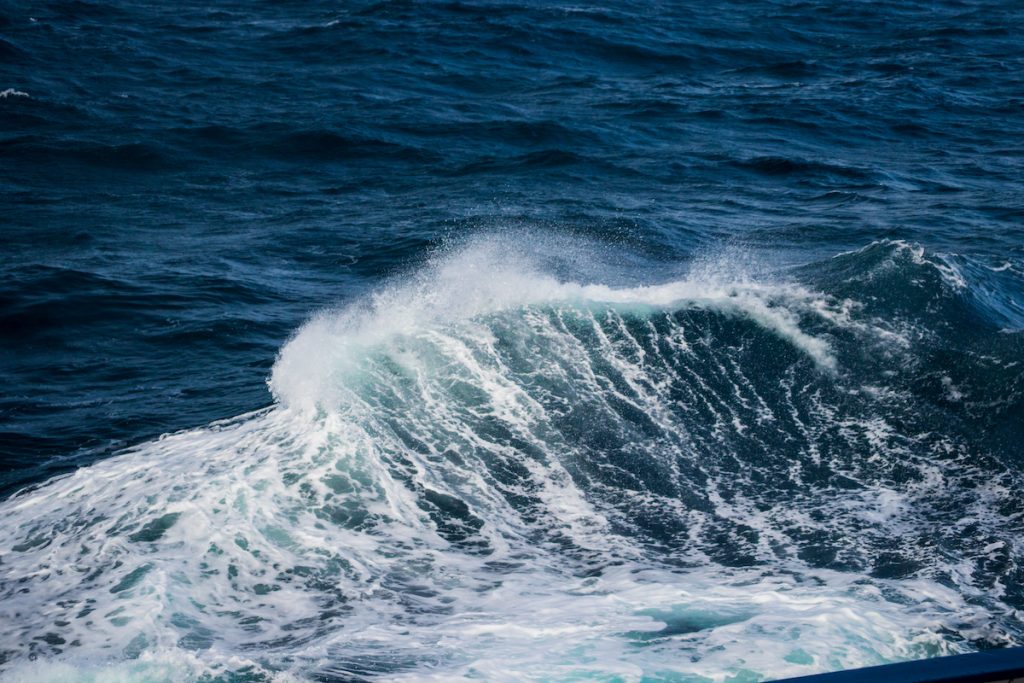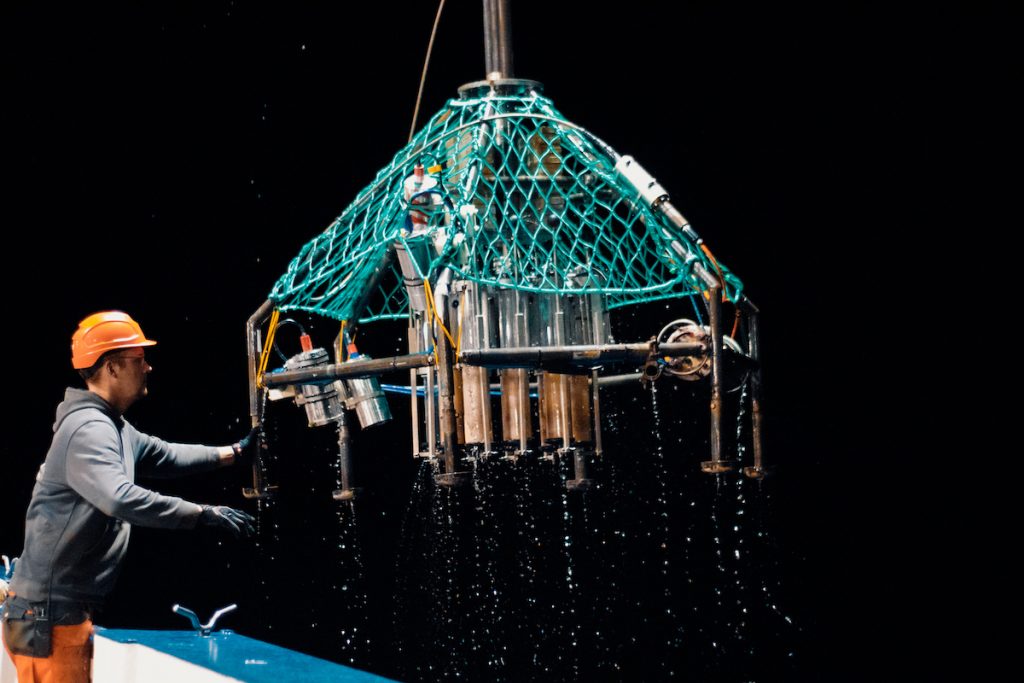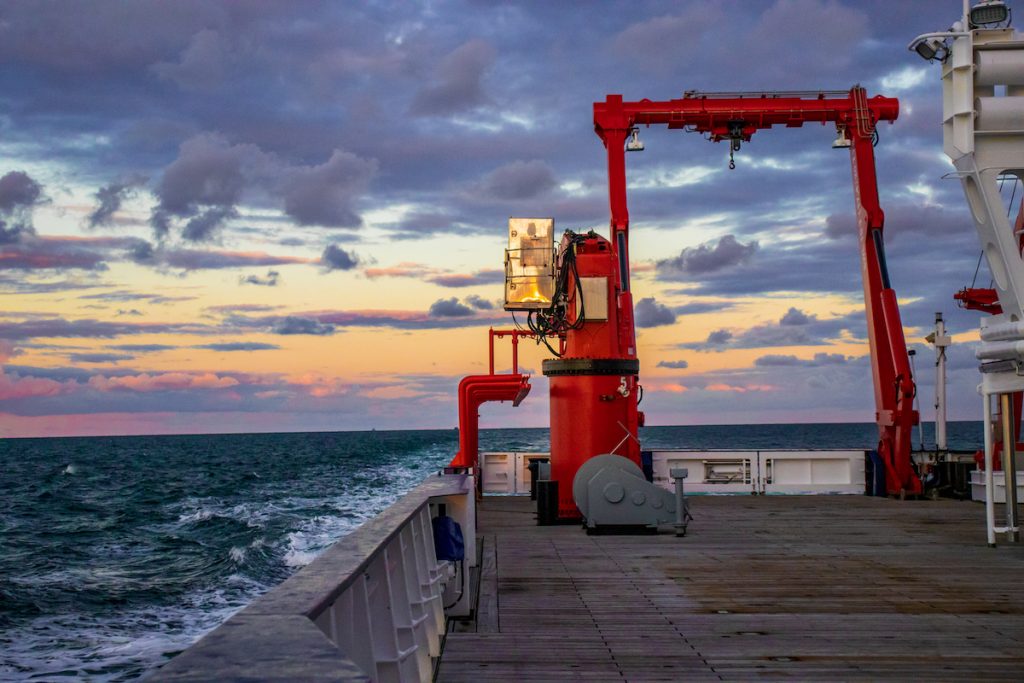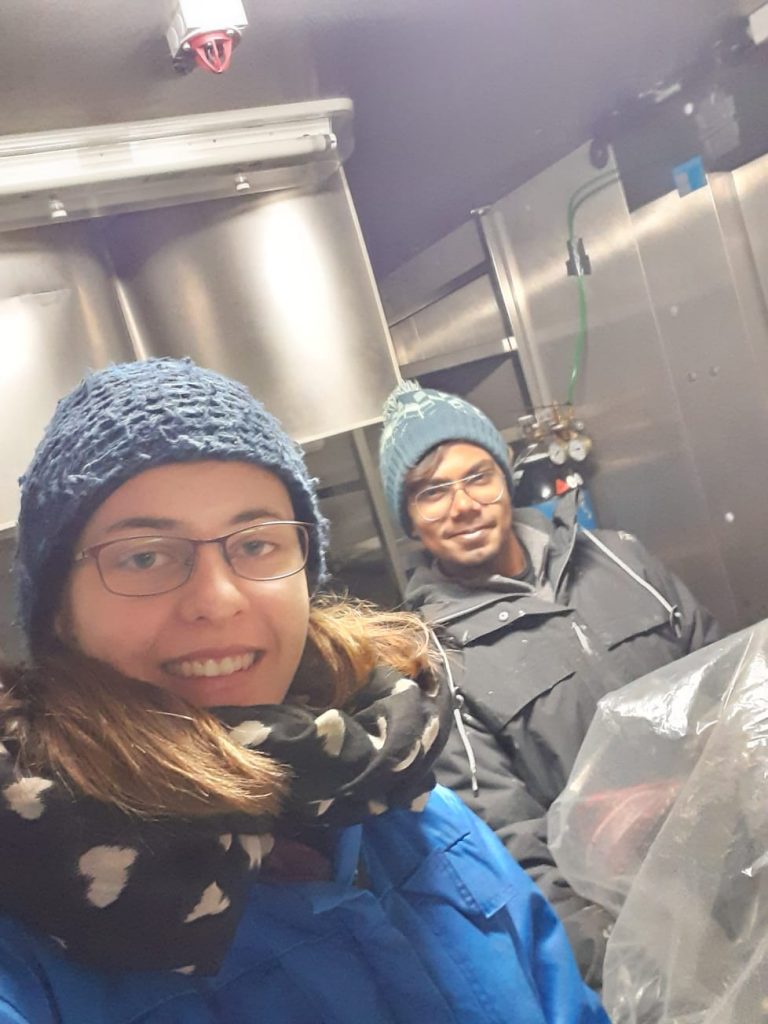— Deutscher Text folgt unten —
As a young boy, the documentaries on the television about the extreme environments, the nature, the habitats and mysteries of the depth of the oceans always inspired me. Today, I am on the frontier of the research where all the things which I ever dreamed about, are being fulfilled. First times are always special and it’s my first time on a research vessel, which makes the expedition MSM96-Metal ML 2020 a very important stepping stone for me to establish myself as a researcher.

I am on board as a geochemist, working on pore water analysis of the sediments from the abyssal plains of the Atlantic ocean and bottom water sampling. It’s quite a well-balanced division of work between working on deck and working in labs. The bottom water sampling is being conducted using a CTD (Conductivity-Temperature-Depth) rosette, whereas the sediment sampling is done using a Multicorer (MUC).

It’s really interesting and at the same time very time consuming process; the MUC and the CTD rosette once deployed takes about 4 hours to surface back! However, the MUC is equipped with a network camera which enables the scientific party to have a better understanding of what they are dealing with and have a successful capture of the sediments from the bottom. It was a precious moment for me when the first sediments came up from 4,800 m of depth; that soft clay in my hand just made me wonder “It’s the clay which no one has ever touched before and no one else probably will!”.

The MUC is equipped with nine deployable liners which can capture the sediments. Once the cores resurface, a 6 to 7 hours long processing is followed after transferring them indoors. The sediments need to be maintained at a similar temperature as they were extracted from, which is 4°C, therefore all sediment extraction from cores to centrifuge tubes needs to be done in a cool room which is pre-set to a temperature between 4°C -8°C! We are first looking at the oxygen profiles of sediments, which in most cases gets anoxic after few centimetres of layers, therefore all the pore water extraction and further protocols need to be done in an anoxic environment in a glove bag.

In general, it’s a good overlap of all scientific work being carried out on this cruise. The bathymetry maps by Multibeam echo sounding (MBES) help position the MUC sites and pre-estimate the profiles and sediment type, whereas the Ocean floor observation system (OFOS) helps create a high resolution image dataset which includes accounting for the deep sea fauna which thrives in these low nutrient habitats. – by Palash Kumawat

Als kleiner Junge haben mich die Dokumentarfilme im Fernsehen über die extremen Umgebungen, die Natur, die Lebensräume und die Geheimnisse der Tiefe der Ozeane immer inspiriert. Heute befinde ich mich an der Grenze der Forschung, wo all die Dinge, von denen ich immer geträumt habe, in Erfüllung gehen. Das erste Mal ist immer etwas Besonderes, und es ist mein erstes Mal auf einem Forschungsschiff, was die Expedition MSM96-Metal ML 2020 zu einem sehr wichtigen Sprungbrett für mich macht, um mich als Forscher zu etablieren. Ich bin als Geochemiker an Bord und arbeite an der Porenwasseranalyse der Sedimente aus den Tiefsee-Ebenen des Atlantiks und an Bodenwasserproben. Es ist eine recht ausgewogene Arbeitsteilung zwischen der Arbeit an Deck und der Arbeit in den Labors. Die Probenahme des Bodenwassers erfolgt mit einer CTD-Rosette (Conductivity-Temperature-Depth), während die Sedimentprobenahme mit einem Multicorer (MUC) durchgeführt wird. Es ist ein wirklich interessanter und gleichzeitig sehr zeitaufwendiger Prozess; der MUC und die CTD-Rosette brauchen nach dem Ausbringen etwa 4 Stunden, um wieder an die Oberfläche zu gelangen! Der MUC ist jedoch mit einer Kamera ausgestattet, die es den Wissenschaftlern ermöglicht, besser zu verstehen, womit sie es zu tun haben, und die Sedimente vom Boden aus erfolgreich zu beproben. Es war ein kostbarer Moment für mich, als die ersten Sedimente aus 4.800 m Tiefe auftauchten; dieser weiche Ton in meiner Hand brachte mich gerade dazu, mich zu wundern: “Das ist der Ton, den noch nie jemand angefasst hat und wahrscheinlich auch kein anderer anfassen wird!“ Der MUC ist mit neun ausfahrbaren Linern ausgestattet, die die Sedimente sammeln können. Sobald die Kerne wieder an die Oberfläche kommen, erfolgt nach dem Wechsel ins Labor eine 6 bis 7 Stunden lange Verarbeitung. Die Sedimente müssen auf einer ähnlichen Temperatur gehalten werden, bei der sie extrahiert wurden, d.h. bei 4°C. Daher muss die gesamte Sedimentextraktion, von den Kernen in Zentrifugenröhrchen, in einem kühlen Raum erfolgen, der auf eine Temperatur zwischen 4°C – 8°C voreingestellt ist! Wir betrachten zunächst die Sauerstoffprofile der Sedimente, die in den meisten Fällen nach wenigen Zentimetern Schichtdicke anoxisch werden, daher müssen die gesamte Porenwasserextraktion und weitere Protokolle in einer anoxischen Umgebung in einem luftdichten Beprobungszelt durchgeführt werden. Im Allgemeinen überschneiden sich alle wissenschaftlichen Arbeiten, die auf dieser Ausfahrt durchgeführt werden, gut. Die bathymetrischen Karten mittels Multibeam-Echolot (MBES) helfen bei der Positionierung der MUC-Standorte und bei der Vorabschätzung der Profile und des Sedimenttyps, während das Ozeanboden-Beobachtungssystem (OFOS) bei der Erstellung eines hochauflösenden Bilddatensatzes hilft, der auch die Tiefseefauna berücksichtigt, die in diesen nährstoffarmen Lebensräumen gedeiht.